Content Menu
● Ancient Times: The Birth of Bathing
● The Middle Ages: Modesty and Functionality
● The 18th and 19th Centuries: The Birth of the Bathing Costume
● The Victorian Era: Modesty and Machinery
● The Early 20th Century: A Revolution in Swimwear
● The Mid-20th Century: The Bikini Boom
● The Late 20th Century: Innovation and Diversity
● The 21st Century: Performance, Sustainability, and Inclusivity
● Video: The Evolution of Swimwear
● Cultural Impact and Controversies
● The Future of Swimwear
● Conclusion
● Questions and Answers
>> Q: When did people first start wearing dedicated swimwear?
>> Q: Who invented the bikini?
>> Q: How has technology influenced the evolution of swimwear?
>> Q: What were bathing machines, and why were they used?
>> Q: How has the concept of modesty in swimwear changed over time?
The history of swimwear is a fascinating journey that reflects not only the evolution of fashion but also the changing social norms, technological advancements, and cultural attitudes towards the human body. From the early days of swimming for necessity to the modern era of beach vacations and competitive aquatic sports, the story of swimwear is intricately woven into the fabric of human civilization. Let's dive into the depths of time to explore when and why people started to wear swimwear, and how it has evolved over the centuries.
Ancient Times: The Birth of Bathing
In ancient civilizations, swimming was primarily a practical skill rather than a recreational activity. The concept of swimwear as we know it today did not exist. In ancient Rome and Greece, for instance, swimming and bathing were often done in the nude. Public baths were common, and the focus was on cleanliness and social interaction rather than modesty.
However, some early forms of bathing attire did exist. In ancient Pompeii, mosaics depict women wearing two-piece garments that resemble modern bikinis. These were likely worn for athletic activities rather than swimming. In other parts of the world, such as Japan, people wore loincloth-like garments called fundoshi while bathing.
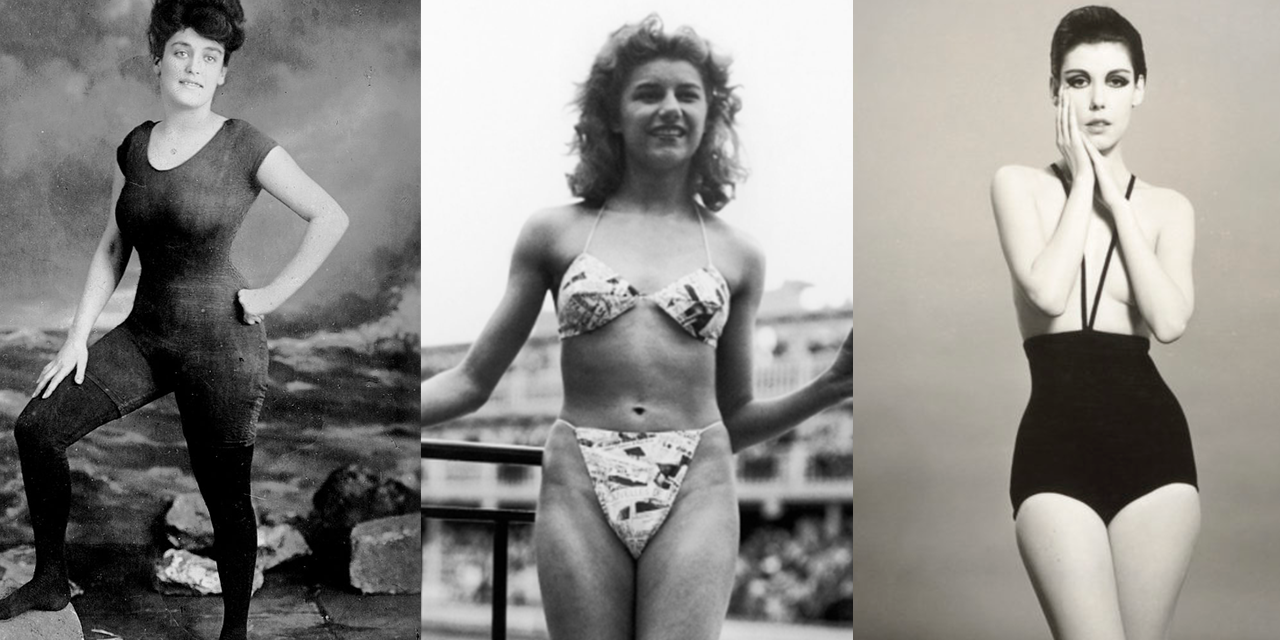
The Middle Ages: Modesty and Functionality
As societies evolved and religious influences grew stronger, attitudes towards nudity changed. Swimming became less common, and when people did bathe in public, modesty was a primary concern. During the Middle Ages, most swimming was done in rivers, lakes, or the sea, and people often wore their regular clothes or simple shifts.
It wasn't until the 18th century that the concept of sea bathing for health reasons began to gain popularity among the European elite. This marked the beginning of a new era for swimwear.

The 18th and 19th Centuries: The Birth of the Bathing Costume
The late 18th and early 19th centuries saw the rise of seaside resorts and the popularity of sea bathing for health and leisure. This created a need for specialized bathing attire. Women's bathing dresses of this era were voluminous garments made of wool or flannel, designed to preserve modesty while allowing for movement in the water. These dresses were often accessorized with long stockings and bathing slippers.
Men's swimwear of the time consisted of knee-length wool pants and sometimes a matching top. The focus was on covering the body rather than facilitating efficient swimming.
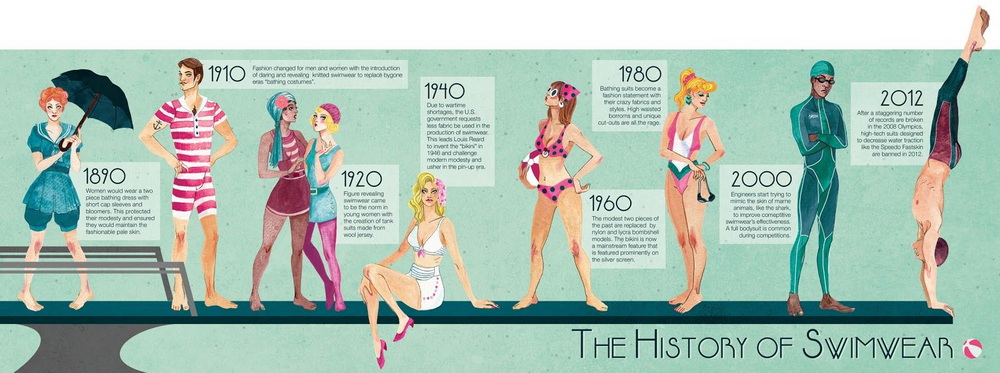
The Victorian Era: Modesty and Machinery
The Victorian era brought significant changes to swimwear. The invention of the bathing machine - a wheeled dressing room that could be rolled into the water - allowed bathers to enter the sea without being seen in their bathing costumes. Women's swimwear became slightly more practical, with shorter skirts and bloomers, but still covered most of the body.
Men's swimwear also evolved, with the introduction of the one-piece knitted swimsuit. These suits, which covered the torso and had short sleeves and legs, became the standard for male swimmers and remained popular well into the 20th century.
The Early 20th Century: A Revolution in Swimwear
The turn of the 20th century marked a significant shift in swimwear design and social attitudes. In 1907, Australian swimmer Annette Kellerman made headlines when she was arrested in Boston for wearing a form-fitting one-piece swimsuit that exposed her arms and legs. This event sparked a debate about swimwear regulations and women's rights.
The 1920s saw a liberation in women's fashion, including swimwear. The one-piece bathing suit became popular, exposing more skin than ever before. Men's swimwear also became more revealing, with trunks replacing the one-piece suits of the previous era.

The Mid-20th Century: The Bikini Boom
The most revolutionary development in swimwear history came in 1946 with the invention of the bikini. French engineer Louis Réard introduced the two-piece swimsuit, naming it after the Bikini Atoll, where atomic bomb tests were being conducted. The bikini was so scandalous that Réard had to hire a stripper to model it, as no regular model would wear it.
Initially met with shock and resistance, the bikini gradually gained acceptance throughout the 1950s and 1960s. Hollywood stars like Brigitte Bardot and Ursula Andress helped popularize the bikini, making it a symbol of the sexual revolution and changing attitudes towards the body.
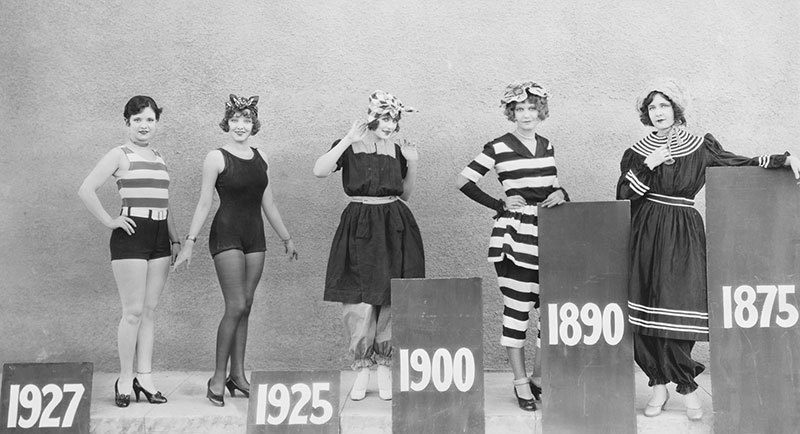
The Late 20th Century: Innovation and Diversity
The latter half of the 20th century saw an explosion of styles and innovations in swimwear. The introduction of new materials like Lycra in the 1960s revolutionized swimsuit design, allowing for more form-fitting and comfortable garments.
The 1970s and 1980s saw the rise of the thong bikini and the popularization of the one-piece swimsuit as a fashion item. Designer labels began producing high-end swimwear, turning the beach into a runway.
For men, the 1970s brought the speedo-style brief, which became popular for both competitive swimming and beachwear. However, by the 1990s, longer board shorts had become the preferred style for many men.
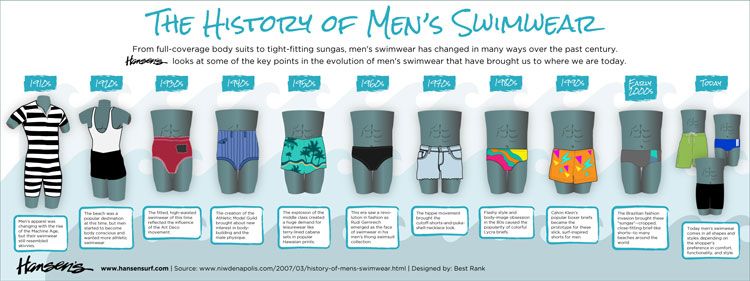
The 21st Century: Performance, Sustainability, and Inclusivity
In the modern era, swimwear continues to evolve. High-tech fabrics and designs have revolutionized competitive swimming, with full-body suits briefly dominating the sport before being regulated.
There's also been a growing focus on sustainability, with many brands now producing swimwear from recycled materials. Body positivity movements have led to more inclusive sizing and styles, catering to a diverse range of body types.
The rise of modest swimwear, including burkinis, has provided options for those who prefer more coverage for religious or personal reasons. At the same time, micro bikinis and barely-there styles continue to push the boundaries of minimalism.
Video: The Evolution of Swimwear
To better visualize the fascinating journey of swimwear through the ages, let's watch this informative video:
This short video by Harper's Bazaar provides a quick overview of how swimsuits have changed from the 1900s to the present day, highlighting key styles and trends from each era.
For a more in-depth look at the history of women's swimwear, including handmade reproductions of historical styles, this video offers a comprehensive overview:
This 12-minute video takes us on a journey through time, showcasing the evolution of women's swimwear from the 18th century to modern times, with detailed explanations and visual representations of each era's styles.
Cultural Impact and Controversies
The history of swimwear is not just about fashion; it's also a reflection of changing social norms and values. Throughout its evolution, swimwear has often been at the center of controversies and debates about modesty, morality, and freedom of expression.
In the early 20th century, beach patrols measured the length of women's swimsuits to ensure they met modesty standards. The introduction of the bikini in the 1940s was met with outrage in many quarters, with some countries banning it outright.
Even today, debates continue about appropriate swimwear. Some European countries have banned burkinis, while others have embraced them as a symbol of cultural diversity. In competitive swimming, there have been heated discussions about the fairness of high-tech swimsuits that significantly improve performance.
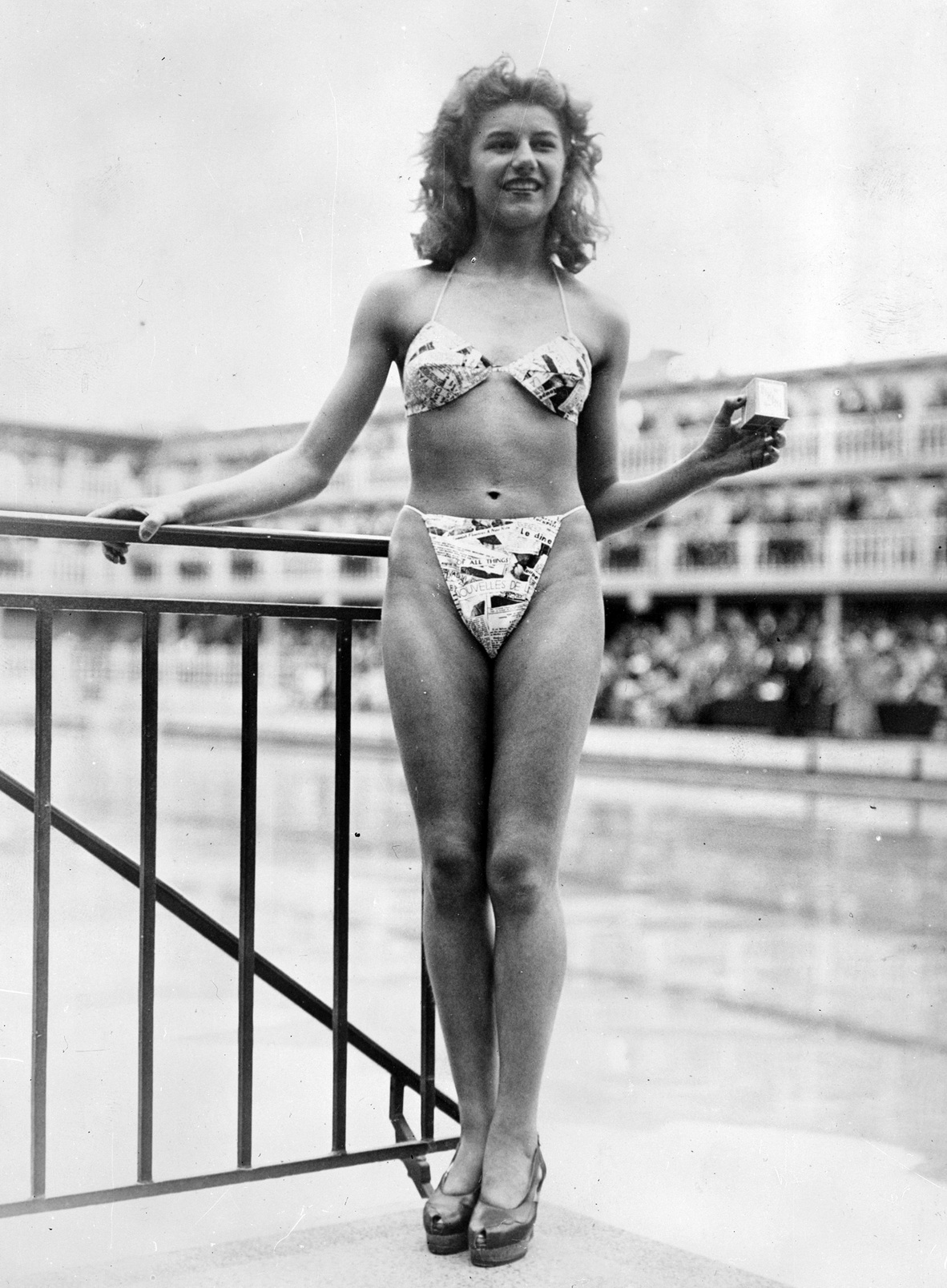
The Future of Swimwear
As we look to the future, it's clear that the evolution of swimwear is far from over. Advances in textile technology are likely to produce even more innovative materials that enhance performance, comfort, and sustainability.
We may see swimwear that offers enhanced UV protection, or suits with built-in technology to monitor vital signs or even purify water. The growing concern for the environment could lead to biodegradable swimwear or suits made from ocean plastics.
Virtual and augmented reality could also impact swimwear, with digital overlays allowing for instant style changes or personalized designs. As body positivity movements continue to gain traction, we may see even greater diversity in styles and sizes, catering to all body types and personal preferences.
Conclusion
The story of when people started to wear swimwear is a tale that spans centuries, reflecting changes in society, technology, and attitudes towards the human body. From the practical nudity of ancient times to the high-tech suits of today, swimwear has come a long way.
What began as a necessity for modesty and function has evolved into a multi-billion dollar industry that combines fashion, function, and self-expression. As we continue to push the boundaries of design and technology, one thing is certain: the evolution of swimwear is an ongoing process, forever adapting to the changing tides of human culture and innovation.
Whether you prefer a modest one-piece, a daring bikini, or something in between, today's diverse range of swimwear options ensures that there's something for everyone. So the next time you hit the beach or pool, take a moment to appreciate the rich history behind your choice of swimwear - you're wearing a piece of history that's been centuries in the making.
Questions and Answers
Q: When did people first start wearing dedicated swimwear?
A: Dedicated swimwear began to emerge in the late 18th and early 19th centuries with the rise of sea bathing for health and leisure. Before this, people often swam nude or in their regular clothes.
Q: Who invented the bikini?
A: The modern bikini was invented by French engineer Louis Réard in 1946. He named it after the Bikini Atoll, where atomic bomb tests were being conducted at the time.
Q: How has technology influenced the evolution of swimwear?
A: Technology has greatly influenced swimwear, from the introduction of elastic in the early 20th century to the development of synthetic materials like Lycra in the 1960s. More recently, high-tech fabrics have revolutionized competitive swimming with performance-enhancing suits.
Q: What were bathing machines, and why were they used?
A: Bathing machines were wheeled dressing rooms used in the 18th and 19th centuries. They allowed bathers, especially women, to enter the water without being seen in their bathing costumes, thus preserving modesty according to the social norms of the time.
Q: How has the concept of modesty in swimwear changed over time?
A: The concept of modesty in swimwear has dramatically changed over time. In the 19th century, swimwear covered most of the body. The 20th century saw a gradual reduction in coverage, with the bikini marking a significant shift. Today, there's a wide range of options from very revealing to fully covering, reflecting diverse cultural and personal preferences.






































































